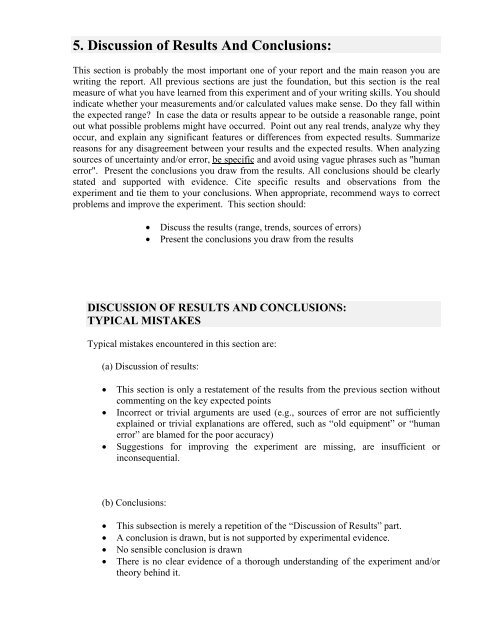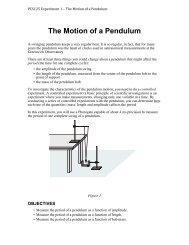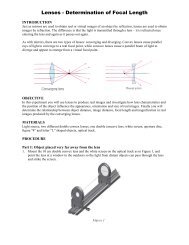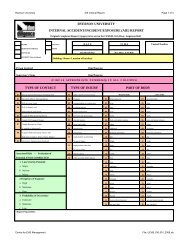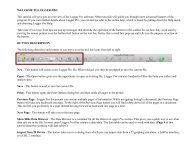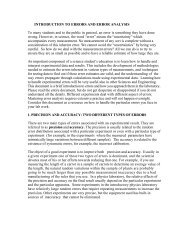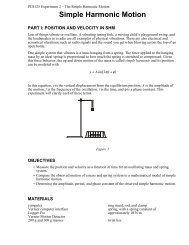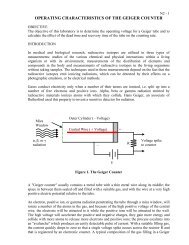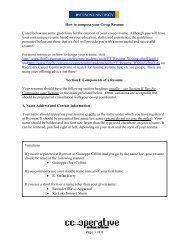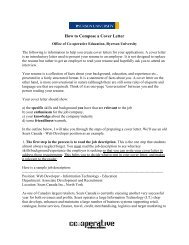Report Guidelines - Ryerson Department of Physics
Report Guidelines - Ryerson Department of Physics
Report Guidelines - Ryerson Department of Physics
Create successful ePaper yourself
Turn your PDF publications into a flip-book with our unique Google optimized e-Paper software.
5. Discussion <strong>of</strong> Results And Conclusions:This section is probably the most important one <strong>of</strong> your report and the main reason you arewriting the report. All previous sections are just the foundation, but this section is the realmeasure <strong>of</strong> what you have learned from this experiment and <strong>of</strong> your writing skills. You shouldindicate whether your measurements and/or calculated values make sense. Do they fall withinthe expected range? In case the data or results appear to be outside a reasonable range, pointout what possible problems might have occurred. Point out any real trends, analyze why theyoccur, and explain any significant features or differences from expected results. Summarizereasons for any disagreement between your results and the expected results. When analyzingsources <strong>of</strong> uncertainty and/or error, be specific and avoid using vague phrases such as "humanerror". Present the conclusions you draw from the results. All conclusions should be clearlystated and supported with evidence. Cite specific results and observations from theexperiment and tie them to your conclusions. When appropriate, recommend ways to correctproblems and improve the experiment. This section should:• Discuss the results (range, trends, sources <strong>of</strong> errors)• Present the conclusions you draw from the resultsDISCUSSION OF RESULTS AND CONCLUSIONS:TYPICAL MISTAKESTypical mistakes encountered in this section are:(a) Discussion <strong>of</strong> results:• This section is only a restatement <strong>of</strong> the results from the previous section withoutcommenting on the key expected points• Incorrect or trivial arguments are used (e.g., sources <strong>of</strong> error are not sufficientlyexplained or trivial explanations are <strong>of</strong>fered, such as “old equipment” or “humanerror” are blamed for the poor accuracy)• Suggestions for improving the experiment are missing, are insufficient orinconsequential.(b) Conclusions:• This subsection is merely a repetition <strong>of</strong> the “Discussion <strong>of</strong> Results” part.• A conclusion is drawn, but is not supported by experimental evidence.• No sensible conclusion is drawn• There is no clear evidence <strong>of</strong> a thorough understanding <strong>of</strong> the experiment and/ortheory behind it.


